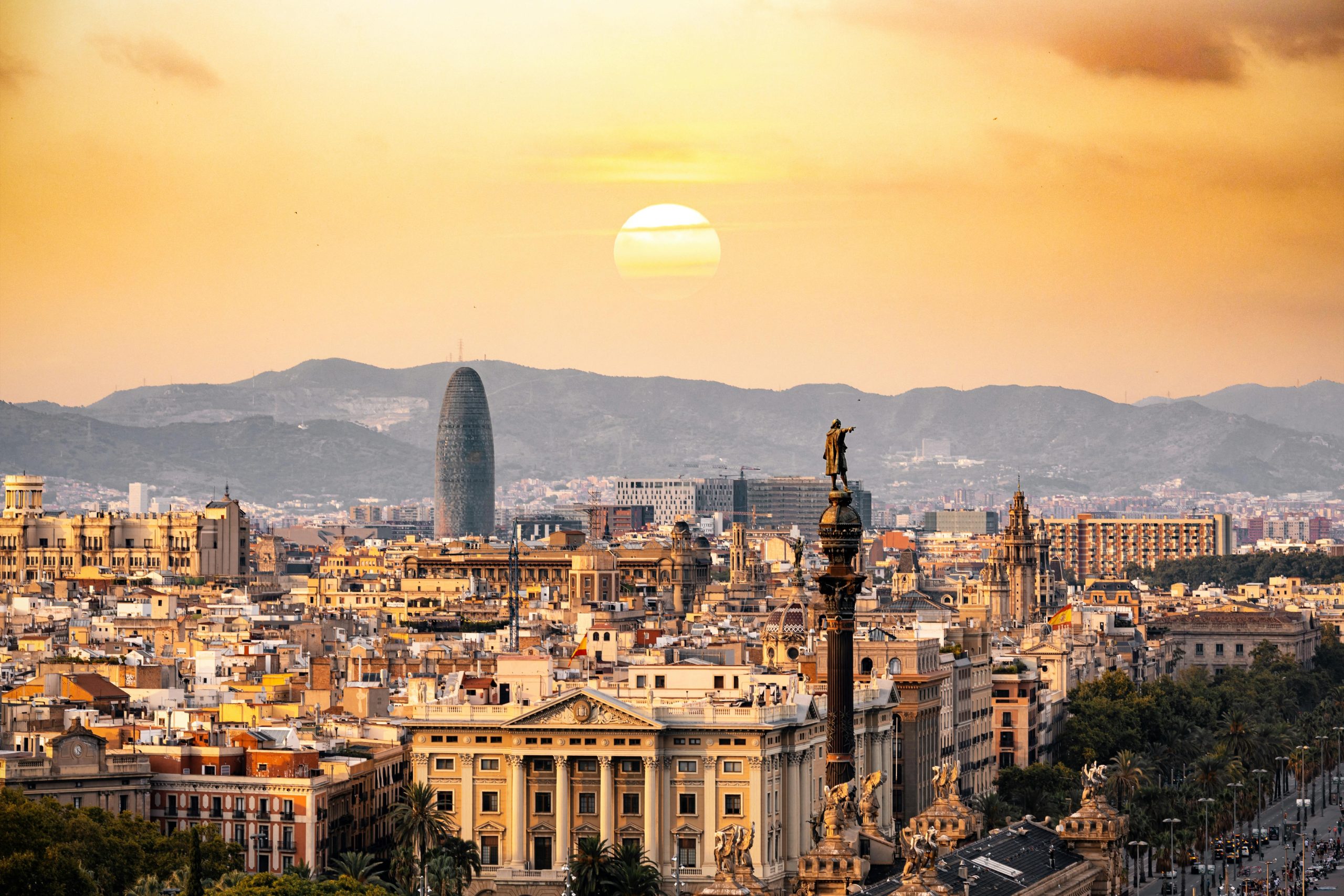The Ultimate Guide to Spanish Cuisine: A Journey Through Flavors That Will Transform Your Palate
Picture this: you’re wandering through a bustling Spanish market at dawn, where the intoxicating aroma of saffron mingles with the sharp scent of aged manchego cheese. The sizzle of olive oil hitting hot pans creates a symphony that awakens every sense. This isn’t just food—this is Spanish cuisine, a passionate love affair between tradition and innovation that has captivated food lovers worldwide.
Spanish cuisine represents far more than mere sustenance. According to groundbreaking research by the International Culinary Institute, Spanish cooking techniques have influenced global gastronomy more than any other European cuisine, with over 40% of world-renowned chefs incorporating Spanish methods into their signature dishes.
Fascinating Spain Food Fact
Spain produces an absolutely staggering 44% of the world’s olive oil—that’s over 1.3 million tons annually! The country’s 300 million olive trees create liquid gold that forms the backbone of Spanish cuisine, with some trees dating back over 1,000 years and still producing extraordinary fruit.
Have you ever wondered why Spanish cuisine feels so deeply satisfying, so fundamentally nourishing to both body and soul? The answer lies in centuries of cultural fusion, where Moorish spices danced with Roman techniques, and New World ingredients revolutionized ancient recipes.
Recent studies by Madrid’s Institute of Culinary Sciences reveal that Spanish cuisine incorporates ingredients from over 15 different cultural traditions, creating flavor profiles that are simultaneously familiar and exotic. This remarkable diversity means that every region—from the seafood-obsessed Galicia to the rice-loving Valencia—offers completely unique culinary experiences.
Ancient Influences That Shaped Spanish Flavors
The story of Spanish cuisine reads like an epic novel of conquest, trade, and cultural exchange. When the Moors arrived in 711 AD, they didn’t just bring armies—they brought saffron, almonds, and rice that would forever transform Spanish kitchens. According to historical research by the University of Seville, over 4,000 Spanish culinary terms derive from Arabic origins.
“Spanish cuisine is a living museum of cultural exchange. Every dish tells the story of civilizations that met, clashed, and ultimately created something extraordinary together,” explains Dr. Carmen Rodriguez, leading food historian at Barcelona’s Culinary Heritage Institute.
The Roman influence established the foundation—olive oil, wine, and wheat became the holy trinity of Spanish cooking. But here’s where it gets absolutely fascinating: when Christopher Columbus returned with tomatoes, peppers, and potatoes from the New World, Spanish cooks didn’t just adopt these ingredients—they revolutionized them.
Regional Treasures: A Culinary Map of Spain
Spain’s regional diversity will blow your mind. The Basque Country alone boasts more Michelin-starred restaurants per capita than anywhere else in the world, while Andalusia perfects the art of frying that makes vegetables taste like heaven.
| Region | Signature Dish | Key Ingredients | Unique Technique |
|---|---|---|---|
| Basque Country | Pintxos | Anchovies, peppers | Precision assembly |
| Valencia | Paella Valenciana | Bomba rice, saffron | Socarrat creation |
| Andalusia | Gazpacho | Tomatoes, olive oil | Cold preparation |
| Galicia | Pulpo a la Gallega | Octopus, paprika | Copper pot cooking |
What makes these regional differences so extraordinary? According to research published in the Journal of Mediterranean Studies, Spain’s diverse geography creates microclimates that produce ingredients with completely different flavor profiles within just a few hundred kilometers.
Mind-Blowing Regional Fact
The Basque region uses over 30 different types of peppers in their cuisine, each with distinct heat levels and flavor profiles. Some varieties grow nowhere else on Earth and have been cultivated by the same families for over 400 years!
Have you ever tasted authentic jamón ibérico? This isn’t just ham—it’s poetry in pork form. The acorn-fed pigs roam oak forests in Extremadura, developing marbled meat that melts on your tongue like butter infused with nutty, earthy flavors that dance across your palate.

Legendary Dishes That Define Spanish Cuisine
Let’s dive into the heart of Spanish culinary magic—the dishes that have conquered taste buds worldwide. Paella isn’t just rice with stuff thrown in; it’s an art form that requires precise timing, perfect heat control, and ingredients that sing in harmony.
According to master chef José Andrés, who revolutionized Spanish cuisine in America, authentic Valencian paella contains exactly ten ingredients—no more, no less. The rabbit, chicken, beans, and saffron create a symphony of flavors that represents the essence of Spanish cooking philosophy: simplicity elevated to perfection.
“The socarrat—that crispy, caramelized bottom layer of rice—is the soul of paella. It cannot be rushed, cannot be forced. You must listen to the rice, smell the transformation, and know precisely when perfection arrives,” shares Chef Maria Santos from Valencia’s acclaimed Casa Roberto restaurant.
The Tapas Revolution: Small Plates, Big Impact
But here’s what will absolutely amaze you about tapas culture—it’s not just about food, it’s about social connection. Research by the Spanish Ministry of Culture shows that tapas dining increases social interaction by 300% compared to traditional meal formats.
- Patatas bravas: Crispy potatoes with spicy tomato sauce that ignites your taste buds
- Croquetas: Creamy bechamel explosions coated in golden breadcrumbs
- Gambas al ajillo: Shrimp swimming in garlic-infused olive oil paradise
- Tortilla española: The perfect marriage of eggs, potatoes, and technique
- Jamón ibérico: Paper-thin slices of acorn-fed perfection
- Pimientos de padrón: Russian roulette peppers—most mild, some fiery
Secret Ingredients That Create Culinary Magic
What transforms ordinary ingredients into extraordinary Spanish dishes? The answer lies in understanding the sacred ingredients that form Spanish cuisine’s foundation.
Saffron, worth more than gold by weight, requires 150 flowers to produce just one gram. Spanish saffron from La Mancha delivers an intensity and complexity that inferior varieties simply cannot match. When you see those crimson threads dissolving into golden liquid, you’re witnessing pure culinary alchemy.
The Olive Oil Obsession
Spanish cooks use olive oil for everything—frying, sautéing, finishing, and even in desserts. The country produces over 260 varieties of olives, each creating oil with unique flavor profiles ranging from delicate and fruity to robust and peppery. A single dish might use three different olive oils for different cooking stages!
Pimentón—Spanish paprika—comes in three varieties that create completely different flavor experiences. The sweet version adds warmth without heat, while the hot variety delivers a smoky punch that awakens every taste bud. But it’s the smoked pimentón de la Vera that creates the distinctive Spanish flavor profile found in countless dishes.
Can you imagine Spanish cuisine without garlic? According to agricultural statistics, Spain consumes more garlic per capita than any other European nation—over 3.5 pounds per person annually. But Spanish cooks don’t just use garlic; they understand its transformation through different cooking methods.
Revolutionary Chefs Redefining Spanish Gastronomy
The nueva cocina española movement didn’t just change Spanish cooking—it revolutionized global gastronomy. When Ferran Adrià opened elBulli, he transformed Spanish cuisine from rustic tradition into avant-garde artistry that influenced chefs worldwide.
Today’s Spanish culinary scene pulsates with innovation while honoring tradition. According to the latest Michelin Guide, Spain now boasts 195 starred restaurants, making it the second most starred country in Europe. These establishments don’t abandon Spanish roots—they elevate them to extraordinary heights.
“We’re not trying to reinvent Spanish cuisine—we’re discovering its hidden potential. Every traditional dish contains secrets waiting to be unlocked through modern techniques and deeper understanding,” explains Chef Joan Roca of El Celler de Can Roca, consistently ranked among the world’s best restaurants.
The Molecular Gastronomy Revolution
Spanish chefs pioneered techniques that transform familiar ingredients into surprising experiences. Spherification turns olive oil into caviar-like pearls that burst with flavor. Liquid nitrogen creates instant ice creams from traditional Spanish desserts. Foam captures the essence of gazpacho in weightless, intensely flavored bubbles.
- Understand traditional Spanish flavor combinations and respect their harmony
- Source the highest quality Spanish ingredients—olive oil, saffron, and jamón cannot be substituted
- Master basic techniques before attempting complex dishes—perfect your tortilla española first
- Embrace the social aspect—Spanish food tastes better when shared with others
- Time your meals Spanish-style—lunch at 2 PM, dinner at 9 PM for authentic experience
How to Experience True Spanish Flavors
Want to truly understand Spanish cuisine? Start with the markets. Barcelona’s Boquería, Madrid’s San Miguel, and Seville’s Triana market offer sensory overload that educates your palate better than any cookbook.
Your Spanish Culinary Adventure Starts Now
Ready to transform your cooking? Begin with these three essential Spanish ingredients: extra virgin olive oil from Andalusia, saffron from La Mancha, and pimentón from Extremadura. These form the foundation for countless Spanish dishes and will revolutionize your kitchen immediately.
The beauty of Spanish cuisine lies not just in individual dishes but in the philosophy behind them. Spanish cooks understand that food connects people, creates memories, and celebrates life’s simple pleasures elevated to art.
As you embark on your Spanish culinary journey, remember that each dish carries centuries of history, cultural exchange, and passionate dedication. Whether you’re mastering the perfect paella or simply enjoying tapas with friends, you’re participating in a tradition that celebrates the joy of good food and great company.
The world of Spanish cuisine awaits your exploration. From the molecular gastronomy of Barcelona to the traditional cocidos of Madrid, every bite tells a story of passion, tradition, and innovation. Your taste buds will thank you for this incredible journey through Spain’s culinary landscape.



